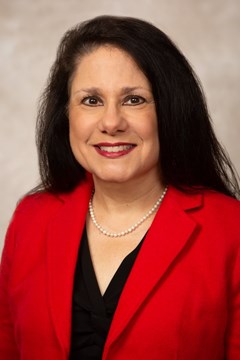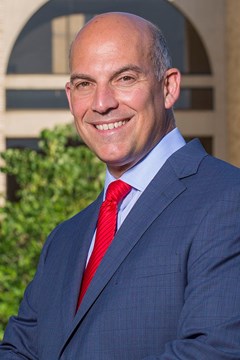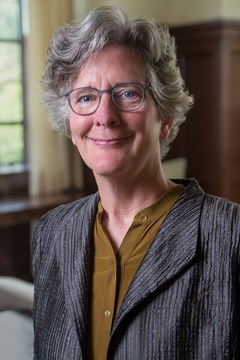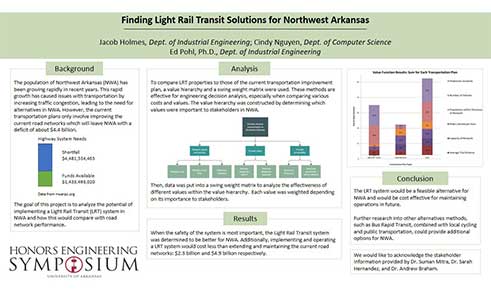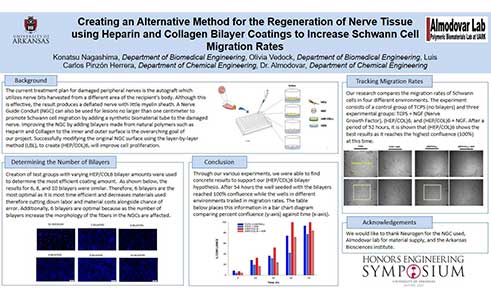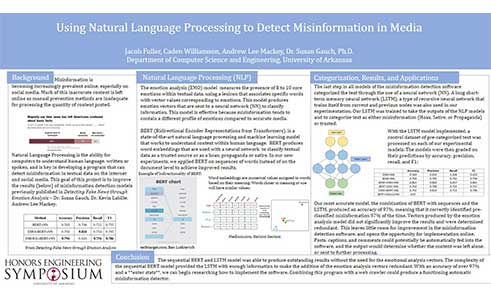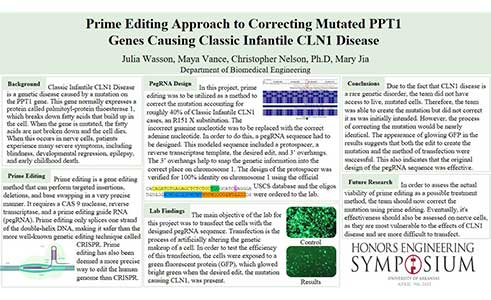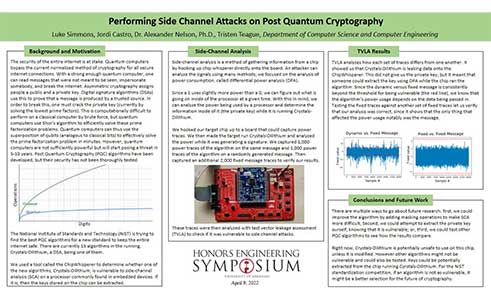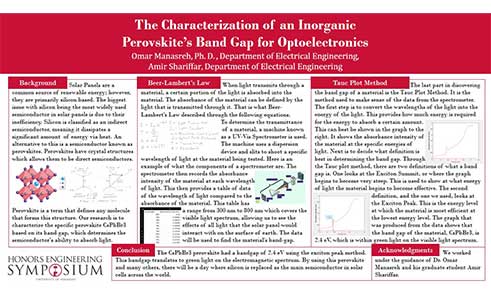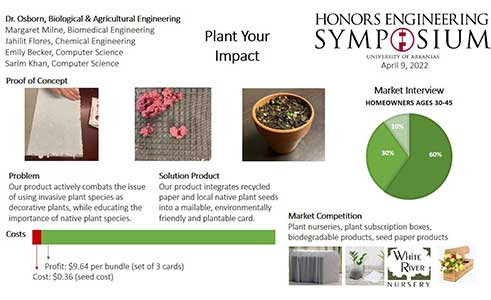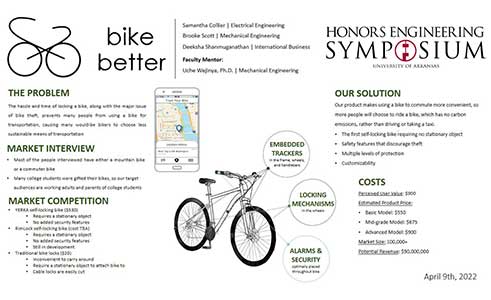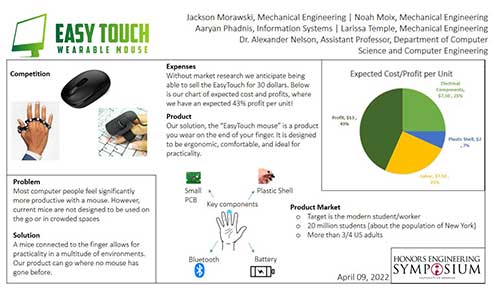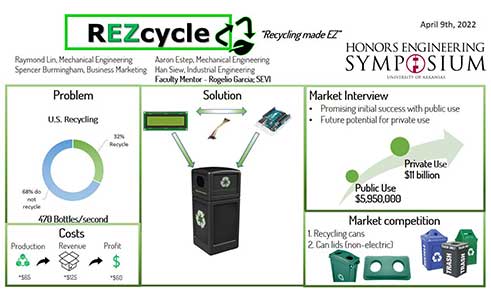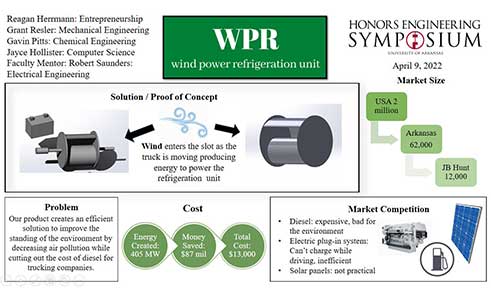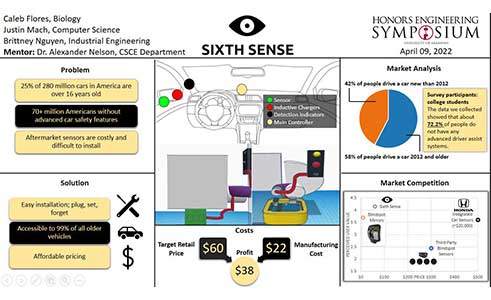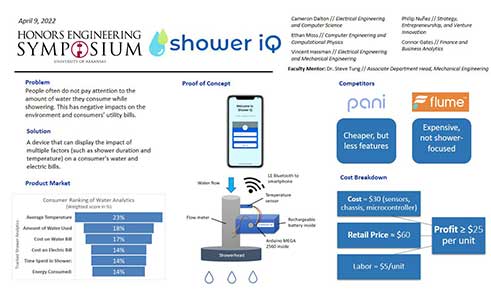
A MESSAGE FROM THE DIRECTOR
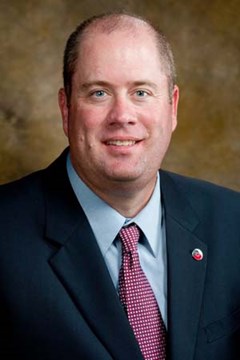
On behalf of the faculty and staff of the College of Engineering at the University of Arkansas, it is my pleasure to welcome you to the 14th Annual Honors Engineering Symposium. The purpose of the symposium is to showcase the research and innovation efforts of 40 first-year engineering students, five first-year business students, and two first-year arts and sciences students who are enrolled in the Honors College or Honors College Path program.
Nineteen students participated in a research colloquium during the fall semester in which they learned about various aspects of academic research in an engineering program. Throughout the year, the students have worked individually or in teams on projects mentored by College of Engineering faculty. The 9 research projects cover several areas of tremendous recent attention in the engineering professions.
Forty-eight students participated in an innovation colloquium during the fall semester in which they learned about various aspects of innovation and entrepreneurship. Throughout the year, the students have worked in teams on projects mentored by University of Arkansas Faculty to help them with innovative design projects. The student teams also had to consider product market and business development plans.
The symposium will run concurrent presentation and poster sessions throughout the afternoon. We invite attendees to attend the poster sessions and visit one-on-one with students about their projects. Attendees may also attend presentation sessions during which they can learn details of the projects. Everyone is welcome at the awards ceremonies.
I appreciate your support and again welcome you to our 14th Annual Honors Engineering Symposium.
Sincerely,
C. Richard Cassady, Ph.D.
College of Engineering Honors Program Director
Dean Kim Needy, College of Engineering
Hello and welcome to the 14th Annual Honors Engineering Symposium. Today, we honor our students who are shaping the world of tomorrow! Participating in this symposium is a significant achievement, and you should be proud. Well done! You have gone above and beyond what is required of first-year students by choosing to participate in this research or innovation experience and for that we celebrate. Please enjoy the presentations and posters of those who will change research, product marketing and business development of the community, state, nation and the world.
Dean Kim LaScola Needy
Dean Matt Waller, Sam M. Walton College of Business
Dean Lynda Coon, Honors College
Video filmed in 2021
RESEARCH TEAMS
Finding Light
Rail Transit
Solutions for
Northwest
Arkansas
Students
Jacob Holmes | Industrial Engineering
Cindy Nguyen | Computer Science
Faculty Mentor
Dr. Ed Pohl | Industrial Engineering
Project Description
Northwest Arkansas is growing very quickly, and the current method to increase transportation capacity will not be sufficient or sustainable for the future. Through our project, we will analyze current road expansion plans and theoretical Light Rail Transit systems through a value hierarchy to determine whether Light Rail could be a useful solution for Northwest Arkansas.
Exploring the Effects
of Varying Stretch
Ratios on Alignment
and Cell Response in
Collagen I Scaffolds
Student
Alyssandra Marie Navarro | Biomedical Engineering
Hyunseo Seok | Biomedical Engineering
Faculty Mentor
Young Hye Song, Ph.D. | Biomedical Engineering
Mackenzie Lewis Graduate Student Mentor | Biomedical Engineering
Project Description
Previous literature suggests that the physical organization of the extracellular matrix components can regulate cell behavior. For this research, collagen I scaffolds containing human adipose stem cells were subjected to mechanical stimulation to mimic collagen matrix arrangement to those observed in native tissues. Then, stem cell secretion of pro-regenerative cytokines from our collagen scaffolds were measured to assess its potential in therapy for traumatic injury.
Creating alternative methods for the regeneration of human Schwann cells post-injury using Heparin and Collagen bilayer coatings to increase migration rates
Student
Olivia Vedock | Biomedical Engineering
Konatsu Nagashima | Biomedical Engineering
Faculty Mentor
Jorge Almodovar, Ph.D. | Chemical Engineering
Luis Carlos Pinzon Herrera Graduate Student Mentor | Chemical Engineering
Project Description
Peripheral nerve injuries create detrimental damage to Schwann cells, with the only known forms of treatment being unreliable and costly. The issue in effective treatment comes from the lack of healthy cell regrowth immediately following injury. Our goal is to increase Schwann cell regrowth by creating and testing Heparin- Collagen bilayer coatings with the use of the stopper method. This simulates nerve injury to track regeneration of healthy Schwann cells through visual monitorization of migration rates.
Cooperative Manufacturing
of a Large-Scale
Tent with Swarm
3D Printing
Students
Jackson Bumgarner | Biomedical Engineering
Faculty Mentor
Wenchao Zhou, Ph.D. | Civil Engineering
Zachary Hyden, Chief Mechanical Engineer | AMBOTS Inc.
Project Description
Swarm 3D printing is an emerging technology that allows for printing larger objects than otherwise possible through the use of multiple mobile printers. We have created a functional design for a foldable tent that can be printed in one solid piece to test the capabilities of the swarm printers. The design utilizes multiple printing materials and a large size to show the potential scale, flexibility, and aptitude of the technology.
Using Natural
Language Processing
to Detect Misinformation
in Media
Students
Jacob Fuller | Computer Science
Caden Williamson | Computer Science
Faculty Mentor
Dr. Susan Gauch | Computer Science and Computer Engineering
Andrew Lee Mackey | Graduate Student Mentor, Computer Science and Computer Engineering
Project Description
As misinformation becomes evermore prevalent and dangerous on the internet, automated processes need to be developed to combat its proliferation. Natural Language Processing is the ability for computers to understand human language, written or spoken, and is key in developing a program that can detect misinformation on the internet and social media with minimal human intervention. This project compares the efficacy of Natural Language Processing models and machine learning models to accurately identity the truthfulness of text-based media online.
Prime-Editing Approach to Creating and Correcting Mutated PPT1 Genes in Classic Infantile CLN1 Disease
Students
Julia Wasson | Biomedical Engineering
Maya Vance | Biomedical Engineering
Faculty Mentor
Dr. Christopher Nelson | Biomedical Engineering
Mary Jia, Graduate Student Mentor | Biomedical Engineering
Project Description
Classic Infantile CLN1 Disease is caused by an R151X substitution in the PPT1 gene that results in the cell incorrectly breaking down fatty acids. Through the design and insertion of a corrected pegRNA sequence into mutated cells, the cells would be able to uptake the genetic information and repair the mutation in their genetic code. This would correct improper protein folding and high fatty acid levels in the cells, relieving patient symptoms.
Side-Channel Attacks
on Post-Quantum
Cryptography
Students
Jordi Castro | Computer Science
Luke Simmons | Computer Science
Faculty Mentor
Dr. Alexander Nelson | Computer Science and Computer Engineering
Tristen Teague, Student Mentor | Computer Science and Computer Engineering
Project Description
Digital signatures are used for many internet-based transactions. These algorithms will become vulnerable when quantum computers can perform robust computation. Candidate post-quantum signature algorithms are in development but have not been hardened to physical side channel attacks in real-world scenarios. Side-channel attacks could expose private keys to forge signatures and transactions by analyzing the power usage of the chip. We use a research tool called the Chip Whisperer to determine whether one of the new algorithms, namely Crystals-Dilithium, is vulnerable to side-channel attacks on a processor commonly found in embedded devices.
The Characterization of an Inorganic Perovskite’s Band Gap for Optoelectronics
Students
Nicholas DeVilliers | Electrical Engineering
William Hay | Electrical Engineering
Faculty Mentor
Omar Manasreh, Ph.D. | Electrical Engineering
Amir Shariffar, Ph.D. | Electrical Engineering
Project Description
Inorganic perovskite materials offer an alternative to silicon in the production of solar cells. There are several perovskites that have not had their band gaps, which is important to determine their effectiveness while in solar cells. The absorbance of the material was measured using a UV-Vis Spectrometer and the band gap was determined using the absorbance in the Tauc Plot Method.
Utilizing Artificial Intelligence to Better Assess and Manage the Poultry Supply
Students
Jayden Hamilton | Mechanical Engineering
Alex Prosser | Computer Science
Faculty Mentor
Miaoqing Huang, Ph.D. | Computer Science and Computer Engineering
Project Description
Managing large quantities of any item can prove to be challenging, but the issue becomes more apparent when it relates to animals. However, thanks to growth in computing power and steady development of artificial intelligence, neural networks can be utilized to recognize and identify animals captured with cameras. This project focuses on how this has been applied to chicken coops and how further development can lead to recognition of behaviors and health of those chickens.
INNOVATION TEAMS
Plant Your
Impact
Students
Emily Becker | Computer Science
Jahilit Flores | Chemical Engineering
Sarim Khan | Computer Science
Margaret Milne | Biomedical Engineering
Faculty Mentor
Scott Osborn, Ph.D. | Biological and Agricultural Engineering
Project Description
A fourth of all plants and one third of all animal extinctions are because of invasive plant species. Our solution is a mailable, recycled paper card that is ingrained with native plant seeds. Its four-step process will teach the importance of native plants and how easy it is to make an impact. We are targeting homeowners with an environment fit to grow outdoor plants, as well as schools that can incorporate this easy project into lesson plans.
Bike
Better
Students
Samantha Collier | Electrical Engineering
Brooke Scott | Mechanical Engineering
Deeksha Shanmuganathan | International Business
Faculty Mentor
Uche Wejinya, Ph.D. | Mechanical Engineering
Project Description
Is it possible to leave your bike anywhere while avoiding the hassle of locking it up and the fear of having it stolen? This pitch deck explores a new, better kind of bike, one that can be locked with the click of a button. Our product aims to solve the problem of bike theft while being more convenient than the ordinary bike lock.
EasyTouch:
Wearable Mouse
Students
Noah Moix | Mechanical Engineering
Jackson Morawski | Mechanical Engineering
Aaryan Phadnis | Information Systems
Larissa Temple | Mechanical Engineering
Faculty Mentor
Alexander Nelson,Ph.D. | Computer Science & Computer Engineering
Project Description
Are you sick and tired of trying to find room to use a computer mouse? This pitch deck outlines our design for a wireless computer mouse that offers all the features of your traditional mouse, just at the tip of your finger! Using modern technology we developed a versatile mouse that will function on any surface, perfect for on the go and in crowded spaces!
Energy Edge
Battery
Students
Kalina De-Russe | Biological Engineering
Kennedy Hicks | Biology
Thomas Miller | Mechanical Engineering
Iseabaila Scott | Biochemistry
Faculty Mentor
Monty Roberts, M.S. | Mechanical Engineering
Project Description
When on a bike trail, having your phone for emergencies is a must. The Energy Edge Battery will make sure your device is always powered. The battery connects a generator to the front wheel of your bike and when it spins, the generator transfers the energy into the battery, so it can turn it into electricity and can charge your device.
REZcycle:
Recycling made EZ
Students
Aaron Estep | Mechanical Engineering
Spencer Burmingham | Business Marketing
Raymond Lin | Mechanical Engineering
Han Siew | Industrial Engineering
Faculty Mentor
Rogelio Garcia, Ph.D. | Strategy, Entrepreneurship and Venture Innovation
Project Description
How does recycling one bottle affect the world? Our product is an attachment to preexisting recycling cans that monitors the input of recycling and displays the impact of that recycling. We plan to utilize infrared sensors and unit data to run information to a small screen that will display researched and compelling data showing how much impact that can make on the environment.
WPR: Wind Powered Refrigeration Unit
Students
Reagan Herrmann | Strategy, Entrepreneurship and Venture Innovation
Jayce Hollister | Computer Science
Grant Resler | Mechanical Engineering
Gavin Pitts | Chemical Engineering
Faculty Mentor
Robert Saunders, M.S. | Electrical Engineering
Project Description
Our product converts the natural air flow around a semi-truck into clean, efficient, and consistent energy for refrigeration units on semi-truck trailers. We are capable of achieving this industry leading innovation by incorporating turbine technology into existing semi-truck aerodynamics.
Sixth Sense: Aftermarket Car Sensors
Students
Caleb Flores | Biology
Justin Mach | Computer Science
Brittney Nguyen | Industrial Engineering
Faculty Mentor
Alexander Nelson, Ph.D, | Computer Science and Computer Engineering
Project Description
Americans are keeping their cars for a more prolonged period and constantly buying more used cars; however, these older cars lack many modern safety features. The National Highway Traffic Safety Administration has data that shows that fatality rates increase among those driving older vehicles. Our product bolsters older modeled cars to have modernized safety features such as blind-spot and parking sensors with seamless installation.
Shower
iQ
Students
Cameron Dalton | Electrical Engineering
Connor Gates | Finance
Vincent Hassman | Electrical Engineering and Mechanical Engineering
Ethan Moss | Computer Engineering and Computational Physics
Philip Nuñez | Department of Strategy, Entrepreneurship and Venture Innovation
Faculty Mentor
Steve Tung, Ph.D. | Mechanical Engineering
Project Description
This project involves a shower product that appeals to environmentally conscious individuals and smart home enthusiasts alike. Shower iQ is a device that attaches between the pipe and shower head that collects data on time spent in shower, shower temperature, and gallons of water used while showering. The collected data is displayed in an easy-to-read format via a smartphone app so users can analyze the impact their showers have on their water and electric bills.
